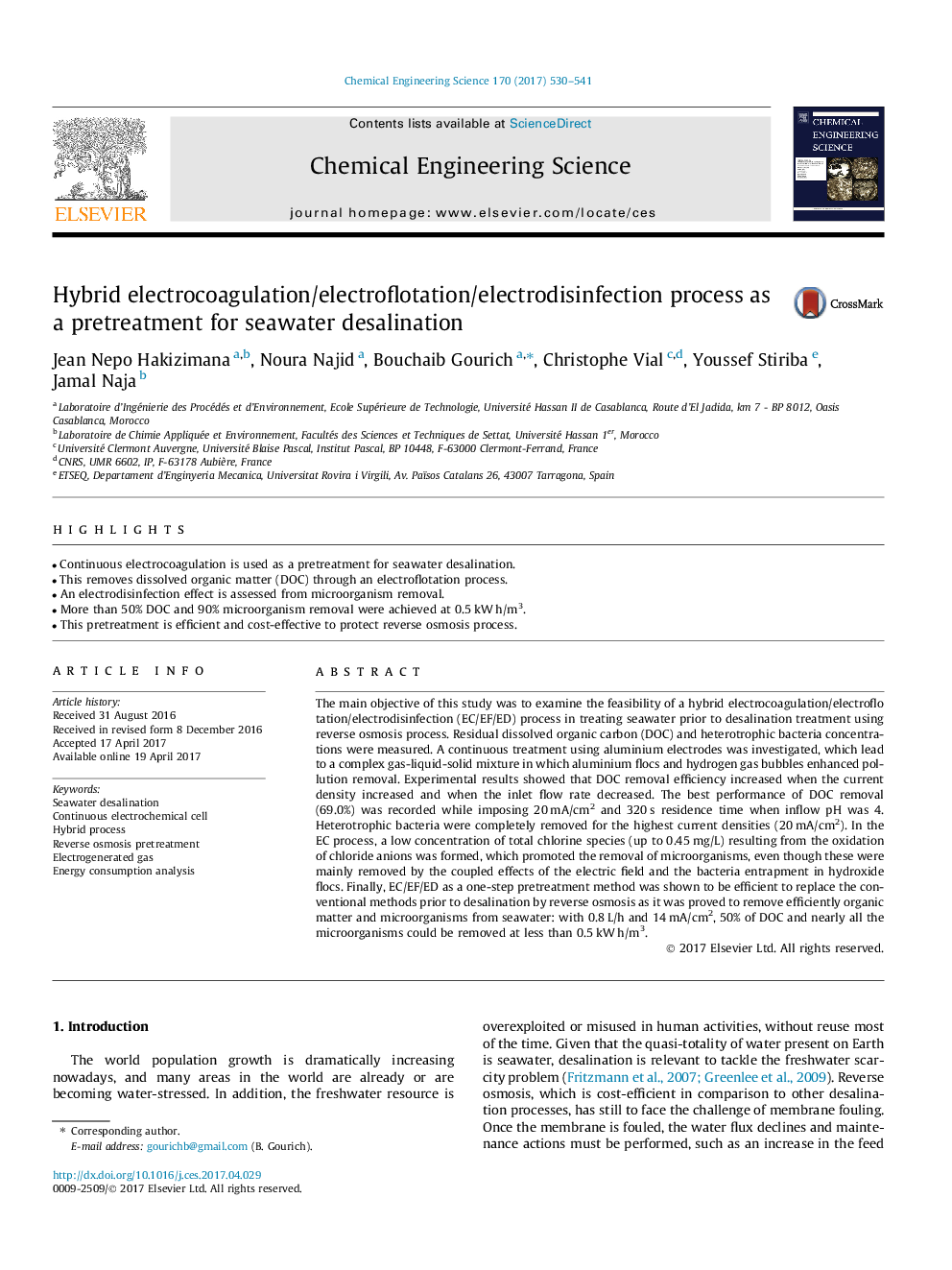| Article ID | Journal | Published Year | Pages | File Type |
|---|---|---|---|---|
| 6467290 | Chemical Engineering Science | 2017 | 12 Pages |
â¢Continuous electrocoagulation is used as a pretreatment for seawater desalination.â¢This removes dissolved organic matter (DOC) through an electroflotation process.â¢An electrodisinfection effect is assessed from microorganism removal.â¢More than 50% DOC and 90% microorganism removal were achieved at 0.5 kW h/m3.â¢This pretreatment is efficient and cost-effective to protect reverse osmosis process.
The main objective of this study was to examine the feasibility of a hybrid electrocoagulation/electroflotation/electrodisinfection (EC/EF/ED) process in treating seawater prior to desalination treatment using reverse osmosis process. Residual dissolved organic carbon (DOC) and heterotrophic bacteria concentrations were measured. A continuous treatment using aluminium electrodes was investigated, which lead to a complex gas-liquid-solid mixture in which aluminium flocs and hydrogen gas bubbles enhanced pollution removal. Experimental results showed that DOC removal efficiency increased when the current density increased and when the inlet flow rate decreased. The best performance of DOC removal (69.0%) was recorded while imposing 20Â mA/cm2 and 320Â s residence time when inflow pH was 4. Heterotrophic bacteria were completely removed for the highest current densities (20Â mA/cm2). In the EC process, a low concentration of total chlorine species (up to 0.45Â mg/L) resulting from the oxidation of chloride anions was formed, which promoted the removal of microorganisms, even though these were mainly removed by the coupled effects of the electric field and the bacteria entrapment in hydroxide flocs. Finally, EC/EF/ED as a one-step pretreatment method was shown to be efficient to replace the conventional methods prior to desalination by reverse osmosis as it was proved to remove efficiently organic matter and microorganisms from seawater: with 0.8Â L/h and 14Â mA/cm2, 50% of DOC and nearly all the microorganisms could be removed at less than 0.5Â kWÂ h/m3.
